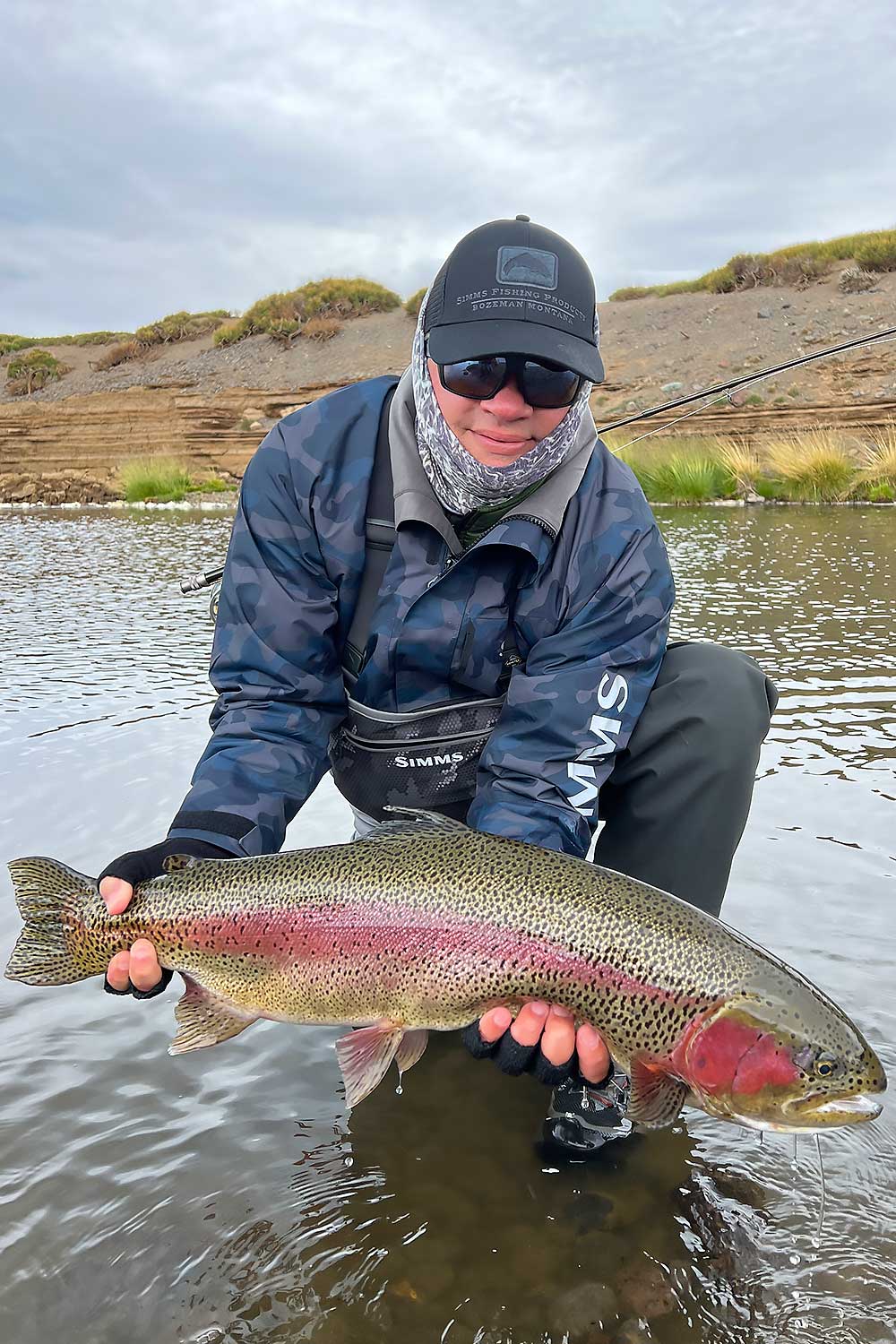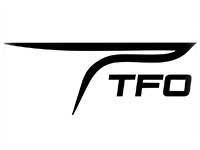
Table of Contents
Every angler has their favorite species, and their preferences are typically based on several factors, such as how easy or difficult a species is to catch, their fighting ability, and availability.
Around the globe, one of the most popular species targeted by anglers is trout. Trout Unlimited reports there are currently 25 native trout species and subspecies found throughout the world. Of all of these types, two of the most widely distributed subspecies are rainbow and brown. Thousands of anglers take trout fishing tours every year in pursuit of these two highly coveted fish. While there are many similarities between the two, there are some real differences between rainbow and brown trout.
Description
Rainbow trout have a torpedo-shaped silvery body and a stripe with an olive-yellowish-pinkish-whitish stripe running down the length of their body that gives the fish its name. The rainbow’s head is smaller than the brown’s and comes to a tapered point. The rainbow’s mouth is larger than other trout species, with the corner extending under the eye.
Brown trout have a more elongated body that tapers at both the head and tail. As their name implies, they have a brown body that may have a yellowish hue. Spots on the upper body tend to be black with a pale halo, with spots on the lower body being shades of red. The head is smaller than the rainbow’s and comes to a point. Their mouth is larger than other trout species, with the corner extending past the eye.
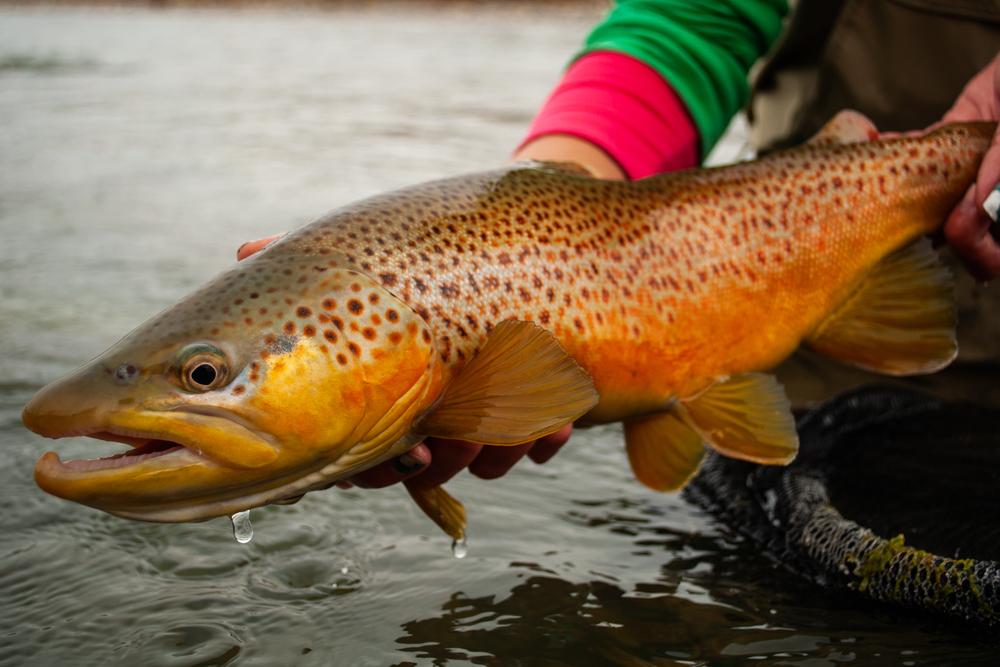
Both rainbow and brown trout can be anadromous, meaning the fish spend part of their life in freshwater, travel to the sea, and then return to freshwater to spawn. Sea-run rainbow trout are referred to as “steelhead” whereas sea-run browns have no similar distinction. While sea-run trout are genetically identical to fish that spend their lives in freshwater, anadromous trout grow to much larger sizes, up to 55 pounds and 45 inches in some cases. Freshwater rainbow trout are typically smaller than browns, averaging up to 16 inches, whereas browns will average 18-20 inches.
Distribution
Due to conservation efforts and stocking programs, both rainbow and brown trout are found in abundance in many areas of the world. Rainbow trout are native to the Pacific coast of North America and Alaska. However, due to stocking programs, they are now found in streams, rivers, and lakes across most of the continent, from Alaska to Mexico. Brown trout are native to Europe, northern Africa, and western Asia but have been introduced into many areas around the world, including North and South America, Norway, and Iceland. Overall, Alaska trout fishing trips are one of the best bets for rainbow and steelhead trout, whereas an Argentina fishing tour is the foremost option for humongous sea-run brown trout as well as rainbows.
Alaska
Next to salmon, rainbows are the most targeted species on Alaska trout fishing trips. Rainbows are native to Southeast Alaska, including the Kenai River and its tributaries, west to the Kuskokwim River basin, and up the river to Sleetmute. The clear-water lakes and streams draining into Bristol Bay, as well as the Alagnak River, also offer excellent rainbow fishing. The Aniak River Lodge has exclusive fishing rights to miles of wild waters, and Hodges Afognak Island Lodge offers world-class fishing adventures for trout and other species. Browns are not over plentiful in Alaska and are considered the most difficult of all trout to catch.
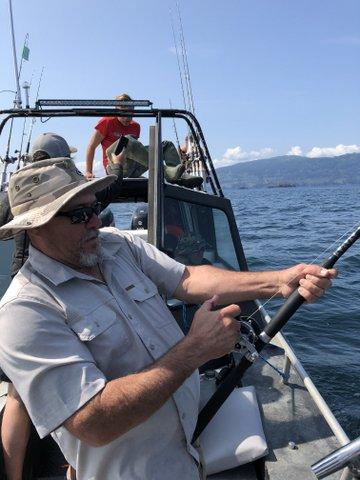
Canada
Rainbows are one of the most popular species on Canada fishing tours and are native to the Peace, Liard, and Athabasca river systems east of the Canadian Rockies that all drain into the Arctic Ocean through the Mackenzie River watershed. In British Columbia and Alberta, native rainbows are found only in the upper Athabasca River watershed. Browns are stocked in most areas of Canada, and the only regions without brown trout populations are the Yukon and the Northwest Territories.
Argentina
While trout are not native to South America, several species, including rainbows and browns, were introduced as early as the latter part of the 19th century. The main fishing region for trout is Patagonia. Patagonia stretches for nearly 1,200 miles from north to south and 300 miles from east to west covering most of the area south of Buenos Aires. It also includes several provinces that are full of trout in which thousands of fishermen visit each year.
Fishing Difficulty and Fighting Ability
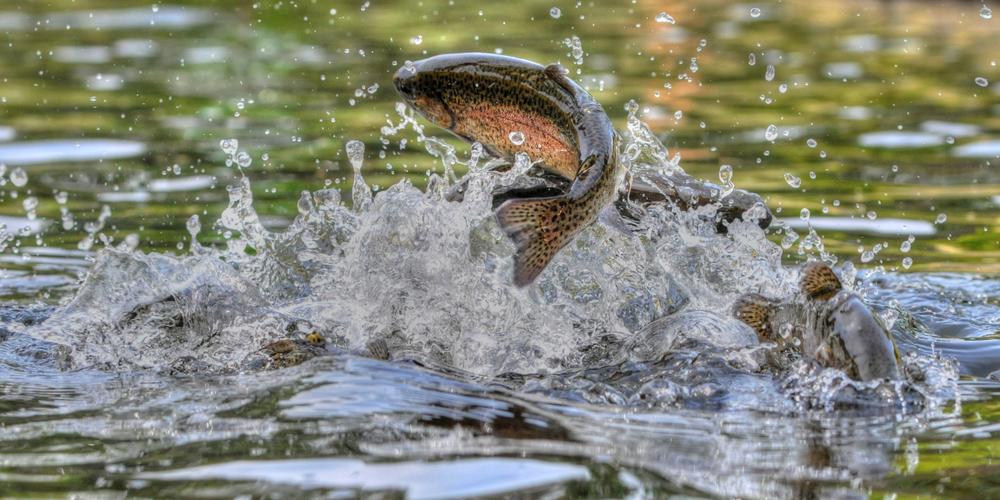
Rainbows and browns are highly sought after on trout fishing tours throughout the world, and both species will readily take a wide variety of flies, lures, and baits. Rainbow trout are more aggressive feeders, typically making them easier to catch, as browns tend to be more reclusive and finicky eaters. Rainbows are renowned for their fighting ability and rocket-like aerobatic jumps when hooked, whereas browns will hit hard and then tend to dive to deeper water and tangle you in structure. Both species will test the angler’s ability in different ways, but both are worth the reward when landed.
Both trout species have their own traits that make them near and dear to the hearts of anglers. Whether or not you have a personal preference, Wildside Joe Rossi of Wildside Adventures Travel Service books trout fishing tours, including Alaska trout fishing trips, Canada fishing tours, Argentina fishing tours, New Zealand fishing tours and European fishing tours as well as hunting trips all over the world. He hosted “Joe’s Wildside Adventures” for 10 years on the Sportsman Channel, FOX, and ROOT Sports. Visit Joe’s YouTube channel WildsideJoe to see some of his adventures. You can contact Joe at Wildside Adventures Travel Service, joe@wildsidejoe.com or call him at 412-352-8703.

